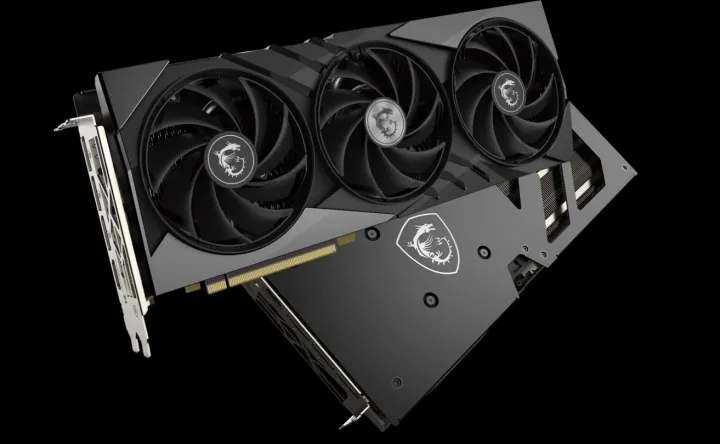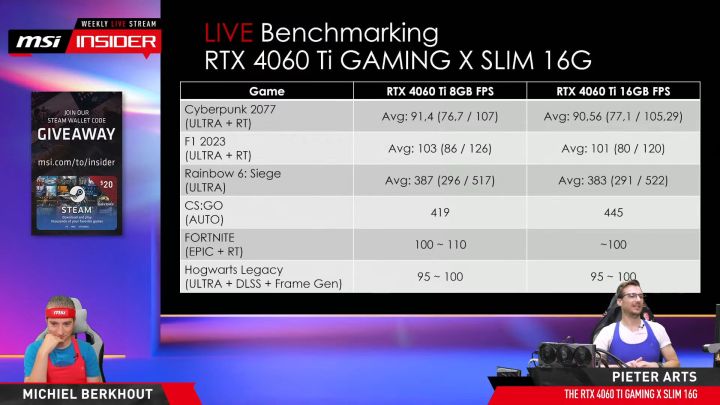Nvidia’s RTX 4060 Ti 16GB is here, but you wouldn’t know it if you didn’t follow GPU news closely. It seems that the GPU might just be so far behind some of the best graphics cards that Nvidia isn’t advertising it too much. As a result, early benchmarks are scarce.
MSI has released some benchmarks of its own, comparing the 8GB and the 16GB versions of the RTX 4060 Ti. It turns out that the new GPU might actually be slower. Is this why Nvidia didn’t even make its own version of this card?

The RTX 4060 Ti 16GB is a weird one. Typically, when a new GPU hits the market, reviewers are sent test units so that the reviews can go up ahead of the actual release. Nvidia also usually (but not always) makes its own Founders Edition GPUs to launch alongside those made by its board partners. This time, Nvidia hasn’t provided the media with any test units, and it didn’t prepare a Founders Edition GPU for this model.
It appears that its poor performance might be to blame for all of this, although everything is quite hush-hush. Fortunately, MSI released a few gaming comparisons in its weekly podcast. The episode has since been set to private, but TechPowerUp caught it before it disappeared, so we can see how the two cards stack up.
MSI’s testing hasn’t been very thorough, so it could be that the benchmarks will turn out a little better. However, what we know right now is that the 16GB RTX 4060 Ti hits slightly lower frames per second (fps) in Cyberpunk 2077, F1 2023, Rainbow 6: Siege, and Fortnite than the 8GB version. It provided around the same fps in Hogwarts Legacy, which is a bit of a letdown, since the game is rather constrained by the low amount of VRAM on the 8GB version. The 16GB RTX 4060 Ti scored one win, leading in CS:GO with 445 fps, whereas its predecessor maxed out at 419 fps.

Of course, the RTX 4060 Ti was never going to be a killer GPU. It sports the exact same specs as the 8GB version, with the added VRAM being the only difference. Unfortunately, 16GB over a 128-bit bus is still not the miracle cure that some may have hoped for with this version, and the fact that both cards share almost the exact same TGP really doesn’t help.
Even if it will perform well in certain titles, it’s still an extra $100 that’s hard to justify if the GPU is about the same (or worse) across the board. You might as well just buy the RTX 4070, which has 12GB memory but much better specs overall. It feels like Nvidia’s strange pricing strategy is still alive and well, and buying a GPU in this generation continues to be a guessing game, as more money really doesn’t translate to better performance anymore.
This GPU initially seemed like a bit of a peace offering from Nvidia. It defended its questionable choice to release the 4060 Ti with 8GB VRAM, but it also planned to launch this GPU shortly after for those who need the extra memory. Unfortunately, this GPU just might prove that simply stacking more VRAM doesn’t help — the rest of the card’s architecture needs to be adjusted to match for there to be any effect.




